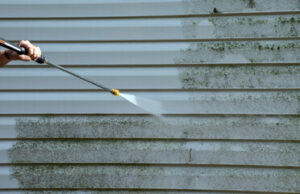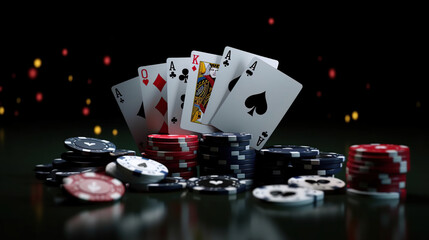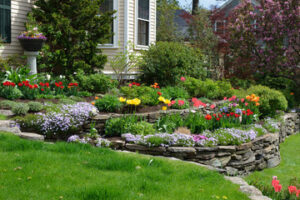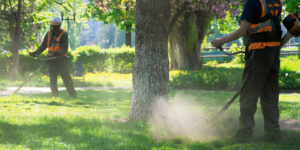Masonry Restoration is a complex process that involves more than simply repairing cracked bricks. It is also an art form that can restore the original aesthetic of historic buildings.
Masonry structures often provide lateral resistance against forces such as wind and earthquakes. Repairing and restoring them helps preserve cultural heritage and improve energy efficiency.
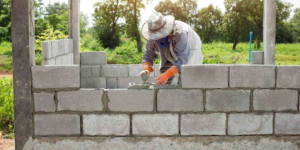
Masonry restoration is necessary to keep a building in good condition. It is important for curb appeal and helps ensure the safety of people inside. A building with a well-maintained masonry façade can attract more business and have better energy efficiency.
The masonry restoration process begins with a comprehensive evaluation. This will include field and laboratory testing to understand the structure’s condition fully. Non-destructive methods like flat jack testing, water testing, or adhesion testing can be used. The evaluation results will help determine the best course of action for repairing and restoring the masonry.
A masonry restoration company will use the evaluation results to develop a repair plan based on the type and severity of damage and the owner’s goals for the building. The plan will include the scope of work and cost. The masonry contractor will also determine the best material to use for repairs. The new material should match the original in properties and composition.
Some building owners may think that their building is in need of a full masonry restoration, but it is not always the case. In fact, most brick buildings only need a repointing service to fix cracks and prevent future damage. The biggest difference between repointing and a full restoration is that the latter involves replacing existing materials. It is a bigger project, takes more time, and has the goal of restoring the building to its original appearance.
Repair
Masonry repair is the process of restoring old bricks, mortar, and other materials to a proper state. This can be done by repairing cracks, addressing structural issues, restoring architectural details, and using modern waterproofing solutions. Masonry restoration is a vital part of any building’s maintenance strategy, and it is important to address damage as soon as possible to prevent further deterioration.
When a masonry structure shows signs of damage, it is important to hire a qualified contractor to evaluate and repair the damage. A specialized masonry contractor will be familiar with the techniques and materials that are required for a successful restoration. The contractor should also be knowledgeable about the historical or architectural significance of the structure, and the project timeline and budget should be taken into consideration.
There are many benefits of masonry restoration, including increased curb appeal and improved functionality. In addition, a well-maintained masonry structure is more aesthetically pleasing than one that has not been maintained, which can help attract customers and clients to a business or home.
Whether you have a newer or older brick building, it is important to make regular masonry repairs. This will help to prevent damage and improve the overall appearance of the property. It will also help to protect the building from further damage and decay, which will save you time and money in the long run. Repairs are usually much cheaper than full restorations and can be completed quickly.
Maintenance
Masonry structures can last a long time, but over time the bricks and mortar will wear out. This can affect the value of a building and cause structural issues. Maintaining masonry structures with regular cleaning and coatings can protect them from moisture damage and extend their lifespan.
In addition to protecting a building’s integrity, masonry restoration can also enhance its curb appeal. This is important for business owners because it helps to attract customers. Many people are less likely to visit a building that looks run down or abandoned. Enhanced curb appeal can also increase the value of a property.
The maintenance process for a masonry building largely depends on the type, condition, age, and location of the structure. Often, the process includes repointing and brick replacement. Repointing involves removing old mortar and replacing it with new mortar. The new mortar should be compatible with the original materials in color, texture, and strength.
Another important part of a masonry maintenance plan is inspecting and repairing cracks. This can help reduce air infiltration and improve energy efficiency. Additionally, restoring masonry components that tie walls together can help preserve the historic and cultural heritage of a building. This is especially important for buildings that are culturally significant or historical landmarks. These structures often require specialized restoration processes, such as historic preservation, historic rehabilitation, and historic reconstruction. This requires the deft hand of a professional masonry restoration expert.
Modern Techniques
Masonry plays an important role in the structural integrity of many buildings. It distributes weight and resists lateral forces like wind and earthquakes. However, over time, masonry structures may become weakened or damaged. Fortunately, skilled contractors can use modern restoration techniques to repair these structural issues.
Masonry restoration involves repairing cracks, repointing, and waterproofing. These techniques can protect masonry from environmental damage, extend its lifespan, and improve its appearance. For instance, repointing involves filling in gaps between bricks and removing loose mortar. Masonry contractors can also re-install original elements to restore a building’s integrity.
For historic sites, masonry restoration can transform deteriorated buildings into architectural highlights. These projects are important because they help preserve cultural heritage and revitalize communities. In addition, they often increase property values. Moreover, they contribute to community pride and inspire creativity.
While there are a number of benefits to masonry restoration, it can be dangerous work. For this reason, masonry contractors need to have workers compensation insurance. This insurance covers the cost of medical bills and lost wages when a worker is injured on the job. While there are a number of different options for this coverage, it is best to work with an independent agent that specializes in construction insurance. This ensures that the right policy is tailored for your business. Additionally, an independent agent can offer the most competitive rates on your workers’ comp insurance.
Insurance
Masonry restoration contractors can preserve and restore a variety of structures. They are often experienced in working with a wide range of materials and can bring back the original aesthetic of brick and stone structures, as well as protect them from future damage. In addition to repairing structural damages, they can also apply waterproofing techniques to prevent water damage.
Many masonry contractors need to carry liability insurance for the sake of their business. This type of coverage can reimburse for any medical costs or property damage caused by a third party as a result of your work. It also covers the cost of litigation, settlements, attorney fees, and other court costs that may arise from a lawsuit. You should be sure to take the time to review your policy and understand your deductibles.
Another type of insurance masonry restoration companies should consider is workers’ compensation insurance. This can help protect your employees in the event that they are injured while performing work on a client’s property. This coverage will pay for any lost wages and medical expenses while they recover.
In addition to these two types of insurance, a masonry restoration company should have business property and commercial auto insurance in place as well. These policies can cover the physical assets of your business, including your office, supplies, and equipment, against theft, fire, storm damage, or vandalism. You may also want to consider adding an umbrella insurance policy for extra protection.
Technological Advancements
Masonry has long been one of the most durable construction materials. However, masonry structures—from grand cathedrals to humble houses—are susceptible to the weathering effects of time and environmental stresses. Water infiltration, differential thermal expansion and contraction, moss and ivy growth, and chemical reactions from modern pollutants can all accelerate the deterioration of brick and stone. These structural issues, when combined with improper maintenance and harsh cleaning methods, can lead to significant damage.
Masonry restoration can dramatically transform aging or damaged structures into revitalized architectural highlights. This process offers many benefits, including increased property value, preservation of historic heritage, and enhanced community pride.
Restoring historical masonry buildings requires a delicate touch and a deep understanding of traditional building techniques. For example, repointing—the process of renewing mortar joints between bricks—must be completed using a mortar mix that matches the color and physical properties of the original material. In addition, it is often necessary to source new materials that compliment the historical context of a building.
Fortunately, there are many technological advances that can help restore and maintain the integrity of masonry. Laser scanning and drone aerial photography are useful tools for identifying the condition of a structure, and mineral testing can reveal the composition of existing masonry materials. Cryogenic and biological treatments can also remove contaminants from masonry surfaces without damaging the original material. Ultimately, masonry restoration is as much an art form as it is a science.
